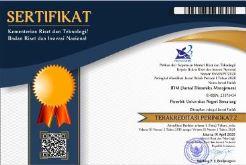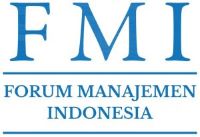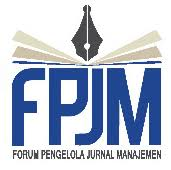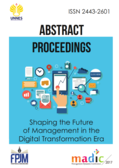Examining The Interplay of Technology Readiness and Behavioural Intentions in Health Detection Safe Entry Station
Abstract
This research aims to determine the factors that influence the adoption of safe entry station (SES) as a health detection technology. There are six main constructs that will be studied, namely Performance Expectancy, Effort Expectancy, Social Influence, Facilitating Conditions and Technology Readiness, towards Behavioural Intention. Data collection was carried out using a survey distributed to 824 participants by analysis was carried out using the Structural Equation Model. The research findings show a significant relationship between technology readiness and behavioral intention regarding the use of safe entry station. The results of this research specifically show that the application of artificial intelligence in safe entry station health detection technology has a significant positive impact on increasing accuracy in the health examination process. Furthermore, this research provides insight into substantial practical implications in various business sectors, highlighting the importance of integrating safe entry station with organizational systems. The academic implications contained in this research will make a positive contribution to the development of knowledge and theory in the field of safe entry station technology adoption and can provide a strong basis for further research, while the managerial implications of this research lie in the ability to further design effective implementation strategies in various sectors.
Keywords
Full Text:
PDFReferences
Ali, M. A., Hassan, M. S., Mohamed, B. D., & Ali, A. H. (2021). Evaluation and Path Coefficient Analysis of Some Sugarcane Clones under Upper Egypt Region Conditions. SVU-International Journal of Agricultural Sciences, 3(4), 159–171.
Amany, D., & Desire, A. (2020). Pembelajaran Interaktif Berbasis Gamifikasi Guna Mendukung Program WFH pada Saat Pandemic Covid-19. ADI Bisnis Digital Interdisiplin Jurnal, 1(1), 48–55.
Anggara, Y. (2020). Cegah COVID-19 di Era New Normal pada KP. Sambengan. ADI Pengabdian Kepada Masyarakat, 1(1), 59–68.
Apriani, D., Devana, V. T., Sagala, A. P., Sunarya, P. A., Rahardja, U., & Harahap, E. P. (2023). Security Using Blockchain-Based OTP with The Concept of IOT Publish/Subscribe. AIP Conference Proceedings, 2808(1).
Ayuna, N. E. (2023). Peran Komunikasi dalam Proses Akulturasi Sistem Sosial Lokal. Technomedia Journal, 8(1), 1–17.
Basuki, S., & Anugrah, R. (2019). Transaction Document Security Protection in the Form of Image File, JPG or TIF Interbank Transfer Using Steganography and Cryptography. IAIC Transactions on Sustainable Digital Innovation, 1(1), 42–48.
Celi, L. A., Cellini, J., Charpignon, M.-L., Dee, E. C., Dernoncourt, F., Eber, R., Mitchell, W. G., Moukheiber, L., Schirmer, J., & Situ, J. (2022). Sources of Bias in Artificial Intelligence that Perpetuate Healthcare Disparities—A Global Review. PLOS Digital Health, 1(3), e0000022.
Chauhan, S., Tyagi, S. D., Gupta, A., & Singh, S. (2022). Genetic Variability, Correlation, Path Coefficient and Cluster Analysis in Bread Wheat (Triticum Aestivum L.) Under Rainfed Conditions. The Pharma Innovation Journal, 11(11) 818-823.
Feng, J., Phillips, R. V, Malenica, I., Bishara, A., Hubbard, A. E., Celi, L. A., & Pirracchio, R. (2022). Clinical Artificial Intelligence Quality Improvement: Towards Continual Monitoring and Updating of AI Algorithms in Healthcare. NPJ Digital Medicine, 5(1), 66.
Figueroa-Armijos, M., Clark, B. B., & Da Motta Veiga, S. P. (2023). Ethical Perceptions of AI in Hiring and Organizational Trust: The Role of Performance Expectancy and Social Influence. Journal Of Business Ethics, 186(1), 179–197.
Gao, J., Ren, L., Yang, Y., Zhang, D., & Li, L. (2022). The Impact of Artificial Intelligence Technology Stimuli on Smart Customer Experience and the Moderating Effect of Technology Readiness. International Journal of Emerging Markets, 17(4), 1123-1142.
Gashaw, Z., Gebreselassie, W., & Hailemichael, G. (2020). Correlation and Path Coefficient Analysis in Yield and Yield-Related Components of Black Cumin (Nigella Sativa L.) Accessions, at Jimma, Southwest Ethiopia. International Journal of Agronomy, 2020, 1–9.
Gumz, J., Fettermann, D. C., Sant’Anna, Â. M. O., & Tortorella, G. L. (2022). Social Influence as a Major Factor in Smart Meters’ Acceptance: Findings from Brazil. Results in Engineering, 15, 100510.
Hardini, M., Sunarjo, R. A., Asfi, M., Cha-kim, M. H. R., & Sanjaya, Y. P. A. (2023). Predicting Air Quality Index Using Ensemble Machine Learning. ADI Journal on Recent Innovation, 5(1), 78–86.
Hardjosubroto, R., Raharja, U., Anggraini, N., & Yestina, W. (2020). Penggalangan Dana Digital untuk Yayasan Disabilitas Melalui Produk UMKM Di Era 4.0. ADI Pengabdian Kepada Masyarakat, 1(1), 1-14.
Huang, Y.-C. (2023). Integrated Concepts of The UTAUT and TPB In Virtual Reality Behavioural Intention. Journal of Retailing and Consumer Services, 70, 103127.
Kam, H. C., Lui, N. C. K., Du, E. Y. C., Lui, M. N. K., Chan, C. S., Cheung, Y. T., Cheung, K. C., & Leung, M. S. M. (2022). Effective Real-Time Face Mask Detection on NVIDIA Edge Devices. HKIE Transactions Hong Kong Institution Of Engineers, 29(2), 120–128.
Kano, K., Choi, L. K., & Subhan Riza, B. (2022). Implications of Digital Marketing Strategy the Competitive Advantages of Small Businesses in Indonesia. Startupreneur Bisnis Digital, 1(1), 44–62.
Komalasari, R. (2023). Telemedicine in Pandemic Times in Indonesia: Healthcare Professional’s Perspective. In Health Informatics and Patient Safety in Times of Crisis (138–153). IGI Global.
Li, X., Tao, S., Huang, Z., Chen, S., Zeng, Z., Ni, L., Huang, Z., Zhuang, C., Wu, H., & Li, W. (2023). IEDA: An Open-Source Intelligent Physical Implementation Toolkit and Library. Arxiv Preprint Arxiv:2308.01857.
Liang, B., Wei, R., Zhang, J., Li, Y., Yang, T., Xu, S., Zhang, K., Xia, W., Guo, B., & Liu, B. (2022). Applying Pytorch Toolkit to Plan Optimization for Circular Cone based Robotic Radiotherapy. Radiation Oncology, 17(1), 82.
Limna, P. (2023). The Digital Transformation of Healthcare in The Digital Economy: A Systematic Review. International Journal of Advanced Health Science and Technology, 3(2), 127–132.
Lin, M., & Huang, Y. (2023). Research on User Experience Design Strategy of Digital Aquarium Based on UTAUT2 Model. International Conference on Human-Computer Interaction, 167–188.
Manickam, P., Mariappan, S. A., Murugesan, S. M., Hansda, S., Kaushik, A., Shinde, R., & Thipperudraswamy, S. P. (2022). Artificial Intelligence (AI) And Internet of Medical Things (IOMT) Assisted Biomedical Systems for Intelligent Healthcare. Biosensors, 12(8), 562.
Marina, D., Pandjaitan, N. K., Hasanah, N., & Cesna, G. P. (2023). Analysis of Lifestyle and Consumer Attitude towards Intention to Purchase a Personal Car during Pandemic. APTISI Transactions on Management (ATM), 7(1), 15–34.
Maroju, R. G., Choudhari, S. G., Shaikh, M. K., Borkar, S. K., Mendhe, H., Maroju Jr, R. G., & Borkar, S. (2023). Role of Telemedicine and Digital Technology in Public Health in India: A Narrative Review. Cureus, 15(3) e35986..
Maulani, G., Rahardja, U., Hardini, M., I’zzaty, R. D., Aini, Q., & Santoso, N. P. L. (2020). Educating Farmers Using Participatory Rural Appraisal Construct. 2020 Fifth International Conference on Informatics and Computing (ICIC), 1–8.
Miraz, M. H., Hasan, M. T., Rekabder, M. S., & Akhter, R. (2022). Trust, Transaction Transparency, Volatility, Facilitating Condition, Performance Expectancy towards Cryptocurrency Adoption Through Intention to Use. Journal of Management Information and Decision Sciences, 25(1S), 1–20.
Mustafa, U., Kreppel, K. S., Brinkel, J., & Sauli, E. (2023). Digital Technologies to Enhance Infectious Disease Surveillance in Tanzania: A Scoping Review. Healthcare, 11(4), 470.
Naik, N., Hameed, B. M., Shetty, D. K., Swain, D., Shah, M., Paul, R., Aggarwal, K., Ibrahim, S., Patil, V., & Smriti, K. (2022). Legal and Ethical Consideration in Artificial Intelligence in Healthcare: Who Takes Responsibility? Frontiers in Surgery, 9, 266.
Ogbeide, K. O., & EJ, E. M. (2016). Path-Loss Prediction for UHF/VHF Signal Propagation in Edo State: Neural Network Approach. Aptikom Journal on Computer Science and Information Technologies, 1(2), 77–84.
Proal, A. D., Vanelzakker, M. B., Aleman, S., Bach, K., Boribong, B. P., Buggert, M., Cherry, S., Chertow, D. S., Davies,
H. E., & Dupont, C. L. (2023). SARS-Cov-2 Reservoir in Post-Acute Sequelae of COVID-19 (PASC). Nature Immunology, 24(10), 1616-1627.
Putri, S. Y., & Meria, L. (2023). Pengaruh Persepsi Nilai dan Kepercayaan terhadap Keputusan Pembelian yang di Mediasi oleh Minat Beli. Technomedia Journal, 8(1), 92–107.
Qadri, Y. A., Nauman, A., Zikria, Y. Bin, Vasilakos, A. V, & Kim, S. W. (2020). The Future of Healthcare Internet of Things: A Survey of Emerging Technologies. IEEE Communications Surveys & Tutorials, 22(2), 1121–1167.
Rahardja, F. A., Chen, S.-C., & Rahardja, U. (2022). Review of Behavioral Psychology in Transition to Solar Photovoltaics for Low-Income Individuals. Sustainability, 14(3), 1537.
Rahardja, U. (2022a). Masalah Etis dalam Penerapan Sistem Kecerdasan Buatan. Technomedia Journal, 7(2), 45–52.
Rahardja, U. (2022b). Social Media Analysis as a Marketing Strategy in Online Marketing Business. Startupreneur Bisnis Digital (SABDA Journal), 1(2), 176–182.
Rahardja, U., & Triyono, T. (2020). Model Scheduling Optimization Workforce Management Marketing. Aptisi Transactions on Management (ATM), 4(2), 92–100.
Rahmad, J. B., Suwandi, S., Soedaryono, C. K. T., Aryanti, L. F. D., & Aprialiasari, D. (2022). Analysis of The Effect of Community’s Role in CSR Activities on the Image of the Company of Minarak Brantas Gas, Inc. ADI Journal On Recent Innovation, 3(2), 153–171.
Roh, T., Park, B. Il, & Xiao, S. S. (2023). Adoption of AI-Enabled Robo-Advisors in Fintech: Simultaneous Employment of UTAUT and the Theory of Reasoned Action. Journal of Electronic Commerce Research, 24(1), 29–47.
Rouidi, M., Hamdoune, A., Choujtani, K., & Chati, A. (2022). TAM-UTAUT ond The Acceptance of Remote Healthcare Technologies by Healthcare Professionals: A Systematic Review. Informatics in Medicine Unlocked, 32, 101008.
Siala, H., & Wang, Y. (2022). SHIFTing Artificial Intelligence to be Responsible in Healthcare: A Systematic Review. Social Science & Medicine, 296, 114782.
Sun, L., Gupta, R. K., & Sharma, A. (2022). Review and Potential for Artificial Intelligence in Healthcare. International Journal of System Assurance Engineering and Management, 13(Suppl 1), 54–62.
Văduva, L. L., Nedelcu, A.-M., Stancu, D., Bălan, C., Purcărea, I.-M., Gurău, M., & Cristian, D. A. (2023). Digital Technologies for Public Health Services after she COVID-19 Pandemic: A Risk Management Analysis. Sustainability, 15(4), 3146.
Venkatesh, V. (2022a). Adoption and Use of AI Tools: A Research Agenda Grounded in UTAUT. Annals Of Operations Research, 308, 1–12.
Venkatesh, V. (2022b). Adoption and Use of AI Tools: A Research Agenda Grounded in UTAUT. Annals of Operations Research, 308, 1–12.
Watini, S. (2023). Development of Java Hands Startup Business Idea Model by Lean Startup Approach. Startupreneur Bisnis Digital (SABDA Journal), 2(1), 43–50.
Zulkarnain, W., & Andini, S. (2020). Inkubator Bisnis Modern Berbasis I-Learning untuk Menciptakan Kreativitas Startup di Indonesia. ADI Pengabdian Kepada Masyarakat, 1(1), 77–86.
View Counter: Abstract - 937 and PDF - 460
Refbacks
- There are currently no refbacks.





